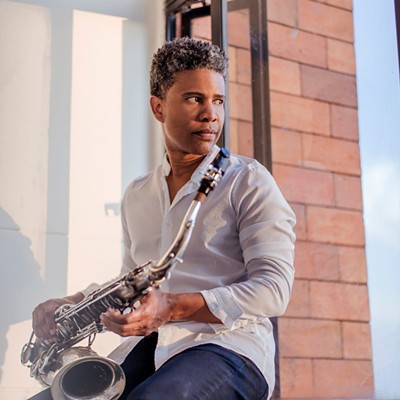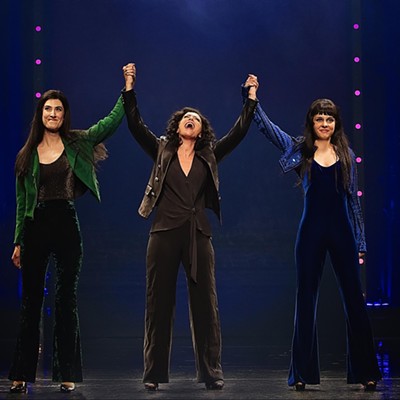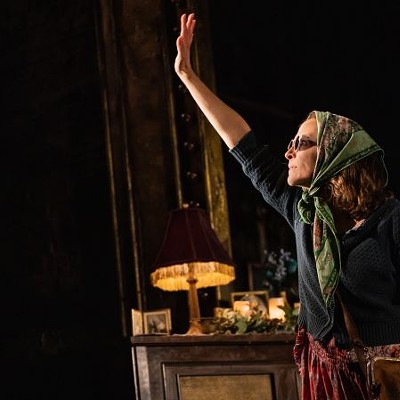Support Us
Houston's independent source of
local news and culture
account
- Welcome,
Insider - Login
- My Account
- My Newsletters
- Contribute
- Contact Us
- Sign out
Houston Artists are Dominant in Texas Abstract, Modern/Contemporary
Olivia Flores Alvarez May 12, 2015 8:00AM
[
{
"name": "Related Stories / Support Us Combo",
"component": "11591218",
"insertPoint": "4",
"requiredCountToDisplay": "4"
},{
"name": "Air - Billboard - Inline Content",
"component": "11591214",
"insertPoint": "2/3",
"requiredCountToDisplay": "7"
},{
"name": "R1 - Beta - Mobile Only",
"component": "12287027",
"insertPoint": "8",
"requiredCountToDisplay": "8"
},{
"name": "Air - MediumRectangle - Inline Content - Mobile Display Size 2",
"component": "11591215",
"insertPoint": "12",
"requiredCountToDisplay": "12"
},{
"name": "Air - MediumRectangle - Inline Content - Mobile Display Size 2",
"component": "11591215",
"insertPoint": "4th",
"startingPoint": "16",
"requiredCountToDisplay": "12"
}
,{
"name": "RevContent - In Article",
"component": "12527128",
"insertPoint": "3/5",
"requiredCountToDisplay": "5"
}
]
As recently as the 1990s, the thinking among art experts was that abstraction in America grew from the work of a handful of New York artists in the 1940s and 1950s. The important pioneers of abstract art in the United States, it was thought, all lived on the East Coast. They certainly didn’t live in Texas. That thinking is proved spectacularly wrong in Texas Abstract, Modern/Contemporary by Michael Paglia and Jim Edwards.
The book, recently published by Fresco Books, looks at abstractionists in Texas and their often cutting-edge work from the late 1930s to the present day. Abstractionists have been continuously active in the state for more than 80 years and are still an important part of the Texas art scene. It’s that continuity that sets us apart, Paglia holds.
Abstractionism got a foothold in some states in the early 20th century but then waned. In other states, it got a late start and is now an active force. Texas, especially Houston, has had a wonderful mixture of talent, education, exposure and support that allowed abstract artists to produce interesting and important, if not nationally recognized, work for more than 80 years.
It’s not just that abstractionists were active in the state for that period of time, Paglia tells us in Texas Abstract. It’s that they, especially artists in Houston, were as “advanced stylistically as any abstract painting being done anywhere in America at the time.” It’s true that Regionalism and other styles of representational art have been more popular and have often overshadowed the work of the abstractionists. The fact that they weren’t well-known, however, doesn’t diminish the quality or importance of their work. In the first half of the 20th century, Robert O. Preusser and Gene Charlton, for example, were both creating work that at the time would have been considered cutting-edge anywhere in the United States.
Paglia curated the works and contributed an essay about the rise of abstraction in the years 1935 to 1965 that opens the book. The second section is a series of profiles of contemporary artists by Edwards. Houston-based artists figure prominently in both.
Two women were largely responsible for the development of a strong abstract scene in Houston, we learn from Paglia’s essay. Emma Richardson Cherry and Ola McNeill Davidson, artists and art teachers in Houston in the 1930s, were not abstractionists themselves but exposed their students to abstract art and encouraged them to experiment with the style.
Another artist who was influential in the development of abstract art in Texas is Houston-based Gertrude Levy Barnstone. Now nearing 90, Barnstone made significant advances in the style early on. She was taking forms from nature and reassembling them in a non-representational way, a definite countercurrent to the more established traditional scene at the time. (Barnstone was among the more than 20 artists mentioned in Texas Abstract who recently participated in a group signing at the Museum of Fine Arts, Houston.)
There are a healthy number of women artists in Texas Abstract. Paglia has said that he made no special effort to include them. He looked at the work and not the artist’s gender in making his selection. Women artists are in the book, he’s previously noted, because women were in the state and working in the style. (In a field where women are obviously underrepresented in exhibits and research, his “Oops, I forgot to be sexist” approach is refreshing.)
Cherry, Davidson and to a degree Barnstone are considered modern figures. Contemporary artists are the focus of the second section of the book. Again, Houston is well represented, with Terrell James among the artists profiled.
We see five works by James, including the colorful Now (2011) and Miss Hecker’s Clandestine Jazz Club (2011). Edwards notes that Walter Hopps, curator and founding director of The Menil Collection, called James one of the best gestural abstractionists in the country. Her work, he has said, features automatist brushwork and “a lyrical freedom usually seen in watercolor rather than in oil.”
James frequently travels to the Davis Mountains region and the Big Bend area for inspiration, Edwards tells us. Filling sketchbooks with line studies of the terrain, James translates the landscapes she sees into “an accumulation of sensations,” according to Edwards. He goes on to note that James is generous in her work, allowing viewers an active role in the process. “There is the painting, then there is something that happens between the viewer and the painting: a sort of second painting,” Edwards quotes her as saying.
Sculptor Jesús Moroles was born in Corpus Christi and works in a studio in Rockport. Some of his most well-known work, however, is in Houston. His Police Officers Memorial (1991), on Memorial Drive, is one of the city’s most successful public art projects. Moroles used Texas pink granite to construct the sculptural installation. Resembling a Greek cross, the work includes a central pyramid rising five levels up from the ground that’s surrounded by four inverted pyramids, each descending three levels. A reflection pool on the structure’s highest level includes the names of fallen Houston police officers.
Another major work by Moroles is his Lapstrake (2002), constructed from Fredericksburg granite. The archway (two pillars with three beams intersecting the top half) is located on a lawn at Texas Tech University in Lubbock.
Edwards says Moroles is notable because “he has adopted the ancient technique of stone carving and the ancient motifs of Meso-America and has used them as a means to create sculptures and installations that are thoroughly contemporary.”
Like Paglia, Edwards does a wonderful job of presenting the facts about abstract art in Texas in a straightforward way, with no unnecessary embellishment. “These are the artists; this is their work,” he seems to say in his profiles.
He doesn’t need to go on and say, “and they are wonderful.” The reader does that.
Texas Abstract gives the included artists some long-overdue recognition. Many have been recognized for their work as individuals. Texas Abstract finally identifies them as part of a movement. Here, the whole is greater than the sum of its parts. There’s a growing acknowledgment of the role Texas artists played in the development of abstractionism in America, but research is still incomplete and there’s lots yet to uncover. Texas Abstract is doing its best to hurry that process along.
Full disclosure: Texas Abstract, Modern/Contemporary co-author Michael Paglia is a staff writer for our Denver-based sister publication Westword. Also, many of the works discussed in the book are from the Randy Tibbits — Rick Bebermeyer collection; Tibbits is a Houston Press contributing arts writer.
KEEP THE HOUSTON PRESS FREE...
Since we started the Houston Press, it has been defined as the free, independent voice of Houston, and we'd like to keep it that way. With local media under siege, it's more important than ever for us to rally support behind funding our local journalism. You can help by participating in our "I Support" program, allowing us to keep offering readers access to our incisive coverage of local news, food and culture with no paywalls.
Olivia Flores Alvarez
Contact:
Olivia Flores Alvarez
Trending Arts & Culture
- Best Bets: Earth Day, Noche Caliente and a Spring Festival
- The Story Stalls But The Beat Goes On in The Cher Show at TUTS
- Houston Bookstore Crawl Celebrates Small Businesses and Literary Diversity
-
Sponsored Content From: [%sponsoredBy%]
[%title%]

Don't Miss Out
SIGN UP for the latest
arts & culture
news, free stuff and more!
Become a member to support the independent voice of Houston
and help keep the future of the Houston Press FREE
Use of this website constitutes acceptance of our
terms of use,
our cookies policy, and our
privacy policy
The Houston Press may earn a portion of sales from products & services purchased through links on our site from our
affiliate partners.
©2024
Houston Press, LP. All rights reserved.




